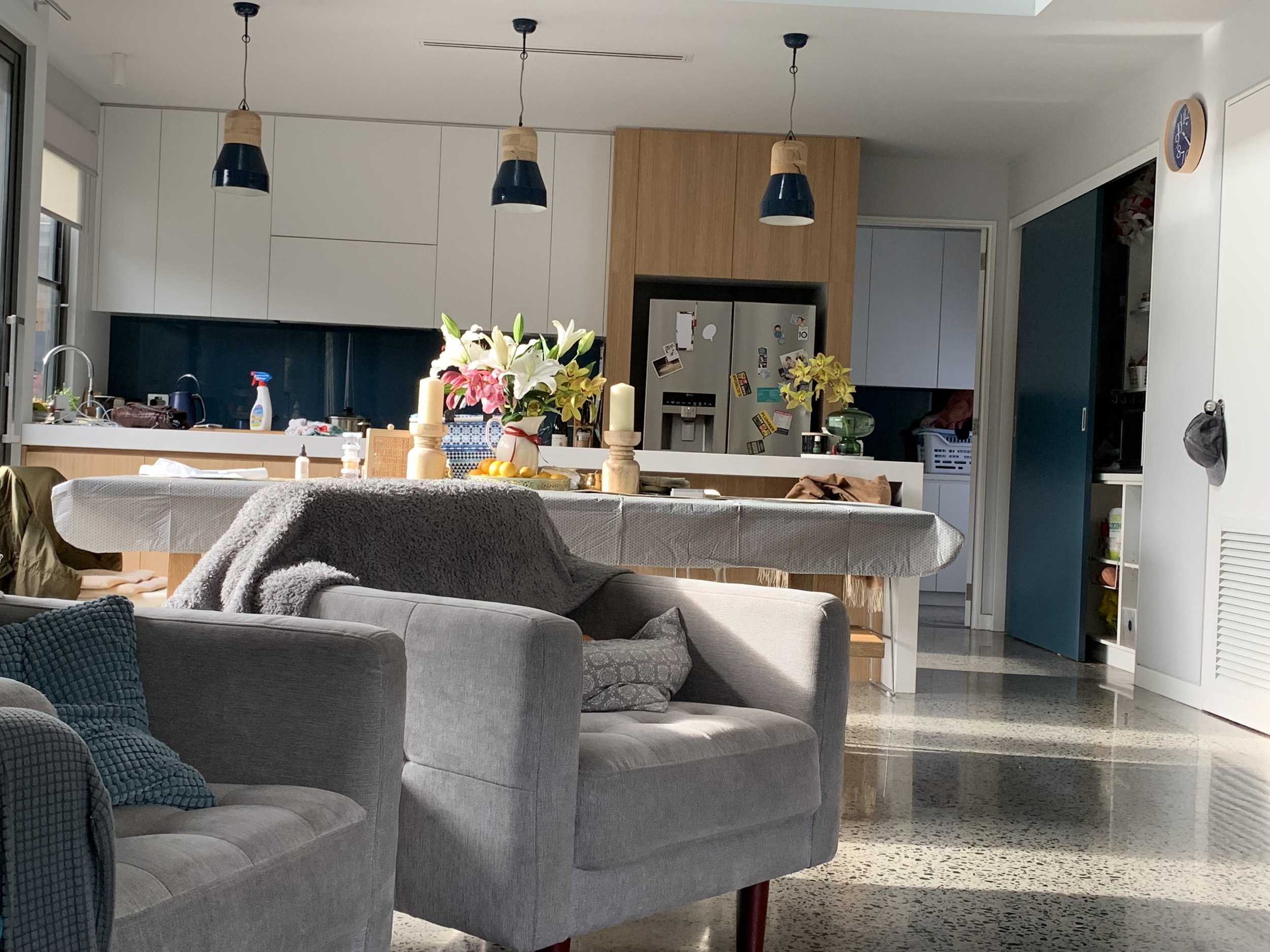With the interest rates just rising and the cost of building at an all-time high, building cost-effectively and in a timely manner is more on the radar than ever before. Here are some key affordable sustainable designs that will assist you in planning and building your renovation or new home.
It is well known that the construction and environmental control of buildings contribute 40-50% of all greenhouse gas emissions. We all can assist in building efficiently with the following steps.
Orientation of design - building to keep as much heat in during the cooler months and sun out in the hotter months can not only cut down on your heating and cooling costs but also ensure that your extension is more efficient with energy. e.g onto a sunny north-facing backyard. Our home is designed to be passively warmer in winter and cooler in summer. A key consideration was also the cost of the home to run not just build.
Before the days of electricity and gas, houses were warmed, cooled and lit by the sun, air and wind. Orientation of a house can take advantage of the sun for natural light and warmth (unless you’re in a tropical climate, where your focus will be on shading). Eaves and awnings can provide sun control; openings such as windows and doors can allow for natural ventilation and cooling; and materials with thermal mass, such as stone and rammed earth, can store heat within. These passive solar design principles improve the performance, energy efficiency and sustainability of a home.
Our living area. It is west facing but captures the light and heats up the floor in winter. We also have double glazing. While concrete is often not the most environmentally friendly product to make, being very carbon-intensive, it does have a number of benefits. Concrete is a great example of thermal mass, helping to store thermal energy, and it’s very hard-wearing, so it requires very little maintenance and has a very long lifespan.
2. The verandah - a verandah is a great way of shading an area, and protecting it from the elements. We use it in part to escape the heat but also to provide a sheltered sitting area.
3. Use local materials where you can. With the short supply of materials in the building industry at the moment, those who have chosen locally sourced materials will be in front. Using local resources is typically a more sustainable option as they are native to the region, sometimes renewable, and reduce the energy that is required to transport goods long distances. If you’re designing or renovating a house, consider what materials are native to your region to create a house that is not only more sustainable, but also more in harmony with the local landscape. Sandstone has been a building block of Australian architecture for more than two centuries, its strength and durability outlasting many other construction materials. Rammed earth is easily accessible and is naturally cool living environments provide a reprieve from the extreme temperatures of the hotter regions.
Rammed earth project under construction
4. Plant a tree or two. Planting trees and gardens not only enriches your environment but can add to shade, atmosphere ad even your table with fresh herbs and veggies. Sometimes you need to remove trees or gardens to create a design but plantings are very important and give so much back to the habitat. We have a circle of trust that we often have our breakfast in and give us a lovely outlook from our living area. We also have a water bladder under our deck to capture rain run off and grey water from our washing machine to water our veggie patch.
The circle of trust garden area.
5. Lamps and skylights instead of main lights. We use lamps where we can instead of moonlights. Not only does it set a better mood but it also is far more energy-efficient. Even on a cloudy day our sky lights in the hall and.
Hallway skylights. Also has automatic blinds which we can close to shut out the hot sun.
6. Find local trades. Working with trades in your local area will assist you with so many elements of your build. We also try and find local suppliers and trades for each job we do to keep the money in the community and because they generally understand what works with the council and how to build efficiently.





![It is nice to be quoted: “A skylight is a horizontal window that provides natural light into rooms and corridors that [usually] cannot have windows,” says MacInnis. “Skylights can also provide outlooks to the sky, which in itself ca](https://images.squarespace-cdn.com/content/v1/5bfb5bdfcc8fed3bb9285ae7/1651200504539-2BYM0FJWR78PZFE4IHYS/image-asset.jpeg)








